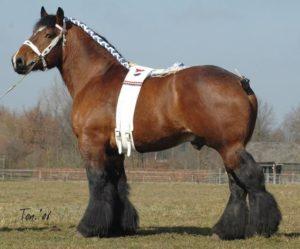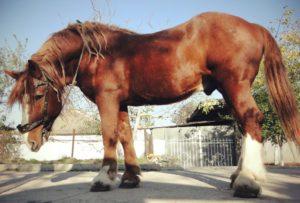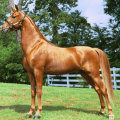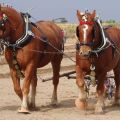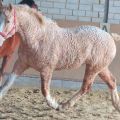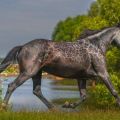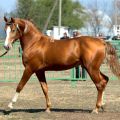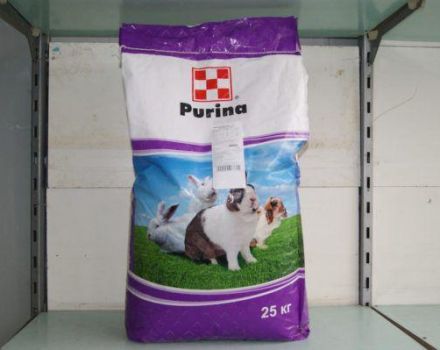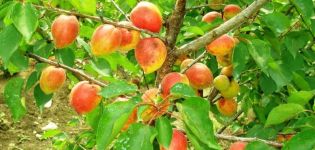Description and characteristics of the Kabardian horse breed and maintenance rules
The archaic Kabardian horse breed is not considered elite, suitable for status riders. However, these hardy, stately, beautiful animals are known all over the world. Kabardian horses are versatile, suitable for pack and draft work, and for horse riding, and for military service. For many decades, strong and fast horses were bred for cavalry, and today the Kabardians are ideal companions for tourists in mountainous areas.
The origin of the Kabardian horse
By the name of the breed, it is clear that the place of origin of the horse is the North Caucasus. This area is replete with steep slopes and deep gorges, mountain paths are narrow and winding. There are two versions of the origin of the Kabardian breed. Some experts believe that the Kabardians were bred by crossing local steppe horses with Arab, Persian and Turkmen horses. According to another version, the Kabardian breed is original, its appearance is the result of a careful selection of aboriginal mountain horses.
The inhabitants of the Caucasus needed strong and resilient horses capable of traveling in mountainous terrain, suitable for both riding and transporting goods. So the Kabardian horses were bred, bold, frisky, desperately flying into battle, moving with amazing grace along dangerous mountain paths, capable of covering many kilometers of a difficult path without rest.
In the 16th century, they learned about Kabardian horses in the west of Asia and in the east of Europe. The stately and hardy breed has become legendary. Representatives of the nobility and merchants gave huge money for Kabardian stallions. The Crimean and Turkish khans were especially fond of the Kabardians.
The stud farms of the Russian Empire were engaged in active breeding of the Circassian breed. In the 20th century, the breed remained one of the best bred in the highlands. Kabardian horses were used by Red Army cavalrymen who fought in the mountainous areas of the Eastern Front during World War II. From the beginning of the 20th century, breeders began to actively improve the breed. The result of their work was the Anglo-Kabardian variety of the breed, whose representatives differ in body structure, more suitable for sports activities.
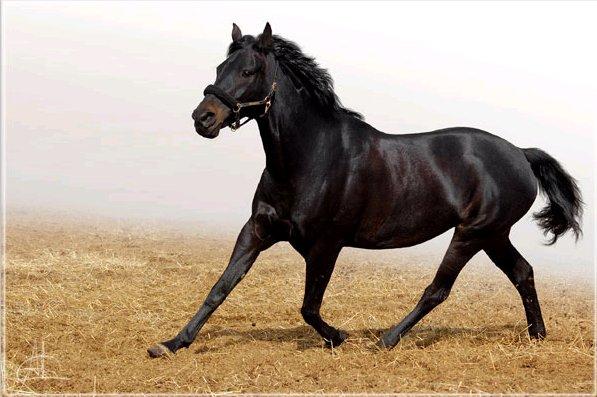
After the collapse of the Soviet Union, the stud farms were in a deplorable state, in the 1990s the breed almost disappeared, and only 300 mares capable of reproduction remained in the whole country. However, the Kabardians managed to preserve the breed. By the 2000th, the number of individuals increased so much that it is no longer necessary to talk about the threat of extinction of the breed.
Description and characteristics of the breed
The Kabardian horse was bred specifically for movement in mountainous areas. The animal feels comfortable both high in the mountains and in the valley. Changing climatic conditions and atmospheric pressure from highlands to lowlands is not a problem for the Kabardian horse.
Thanks to successful long-term selection, a breed was obtained that can easily navigate dangerous rocky roads. The horse freely and fearlessly rises and falls on steep slopes, walks along winding paths, is not afraid of gorges and abysses. Kabardians have an excellent sense of a safe path and a unique ability to keep balance even on the narrowest sections of the road.
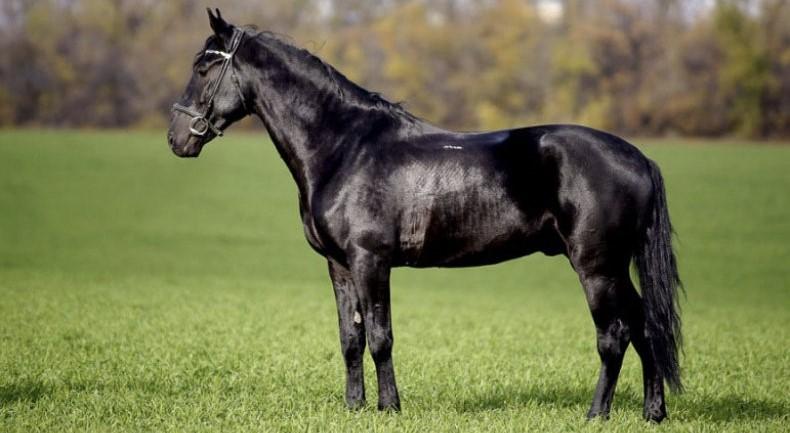
Intra-breed types
The Kabardian breed is divided into three types according to the conditions of maintenance and the purpose of use:
- Light type. For adults, a lean "oriental" constitution is characteristic. Horses are used purely for riding.
- Classical. Stronger, leaner horses. Well expressed muscle mass.
- Massive. This is a harness type. The body of adults is heavy, massive. The skeleton and muscles are well developed. The neck is thick, the legs are strong. This variety is bred in the Stavropol Territory.
Exterior
The Kabardian horse is a typical representative of the harness-riding category.
External characteristics:
- withers height - up to 150 cm;
- weight - up to 400 kg;
- head with expressive features, hunchback is noted;
- the neck is short, muscular;
- the chest is wide, voluminous;
- the body is lean, sinewy, muscular, harmoniously built, there are almost no fat deposits;
- the croup is wide, drooping;
- the legs are strong, tendon, the forearm is elongated, the joints of the hind limbs are characterized by a saber structure;
- the hooves are strong, with a low load, horseshoes are not needed;
- the tail and mane are short, the hair is thin, wavy.
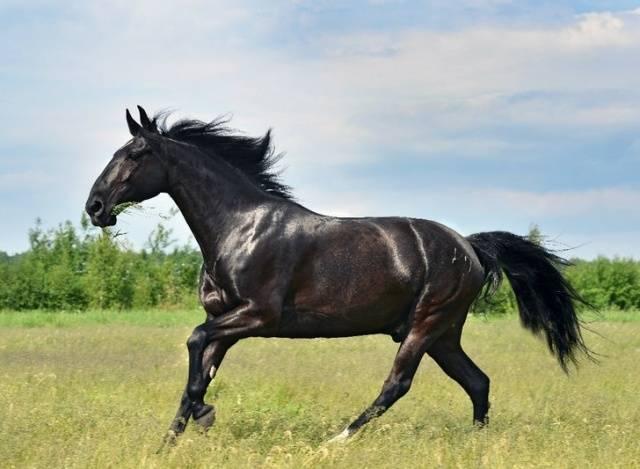
Animal suits
The breed standard for color is strict. There are only the following purebred Kabardians:
- bay (most common);
- black;
- redheads;
- mousey (the rarest color).
Character and temperament
Kabardian horses are freedom-loving and frisky. They are quite capricious, obstinate, stubborn, but they do not take courage. Such character traits are due to the origin and history of the formation of the breed: the highlanders needed horses for military operations and movement in the mountains. The pampered European horses would not be able to cope with such tasks.
Kabardian horses are noble, have a developed intellect, obey their master unquestioningly.
But the orders of an unfamiliar rider can be ignored. To control the obstinate, you need a lot of experience in horse riding. An inexperienced, insecure rider can be thrown off by a horse, even gnawed. Therefore, beginners learning to ride a Kabardian pet for training are not given.
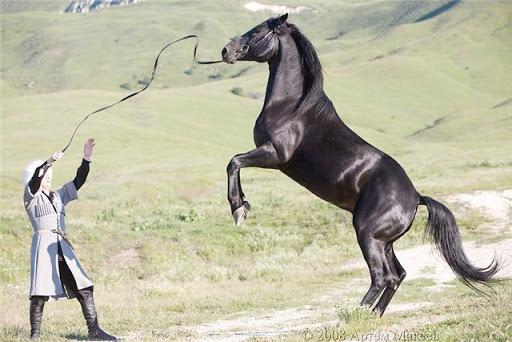
Advantages and disadvantages of the breed
Of the advantages of the Kabardian breed, it should be noted:
- endurance (a horse is capable of walking 100 km per day, carrying a load of 150 kg);
- strong immunity;
- fertility of mares even after 20 years;
- the ability to quickly adapt to environmental conditions;
- high survival rate of young individuals;
- undemanding to the quality of food;
- universality of application.
Breed disadvantages:
- obstinacy, stubbornness;
- late breeding readiness.
Conditions of detention
The uniqueness of the Kabardian breed is that it is adapted for herd keeping. Horses must be in constant motion to feel good. In the Caucasus, it is customary to keep young individuals in herds; they are transferred to the stable at the age of 9. It was the harsh living conditions that formed strong immunity in horses and high adaptability to the environment.
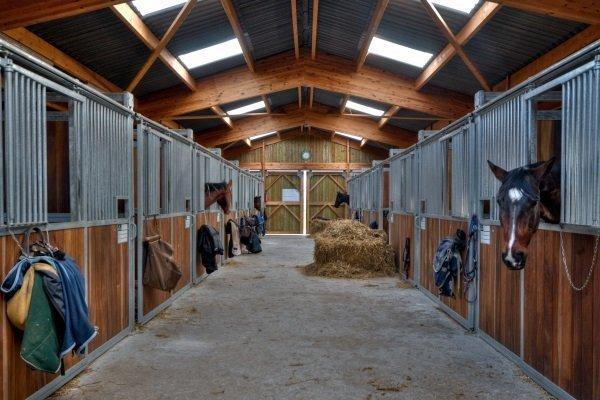
When kept both in the herd and in the stable, the horse must be carefully looked after so that it remains healthy. Leaving means:
- Stable cleaning. Litter change. Disinfection of tools and stall partitions.
- Combing the mane and tail.
- Regular hoof inspection. Cleaning and hooking them.
- Daily cleaning of the coat.
- Washing the anus and turnips.
- Examination of equine teeth by a dentist every 6 months.
Breeding
Individuals that have reached the age of 3 are prepared for mating. The foal stays with its mother for the entire lactation period. Cubs are weaned from brood mares at 7 months, from normal mares at 5 months. If the foal is sickly, then it is left with its mother for up to a year.
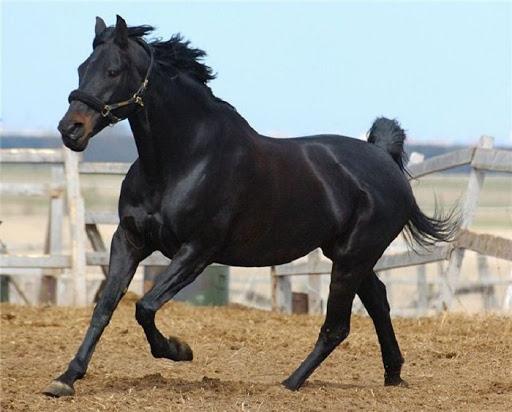
Diet
Herds walking in the pasture feed on pasture. In the winter months and during the dry summer period, add to the diet:
- corn;
- straw;
- fresh vegetables;
- meadow hay.
In the autumn, to prevent hypovitaminosis, breeding and work-laden individuals are given 6-8 kg of carrots daily. During lactation, mares add potatoes and beets to the main diet.
Diseases and treatment
Kabardian horses have excellent immunity. However, with high physical exertion, the animal may develop lameness. Also, Kabardians are characterized by a predisposition to inflammatory pathologies of the respiratory system.

The most commonly diagnosed diseases:
- Streptococcal lesion. The infection is transmitted through the air and through contaminated feed. The disease is accompanied by fever, mucous discharge from the nose, swelling of the lymph nodes. Horses are treated with penicillin antibiotics.
- Flu. In horses, it is accompanied by a cough, mucous nasal discharge, and fever. A sick animal is given inhalation, penicillin antibiotics.
- Helminthiasis. Often, worms are found in herd horses. In a sick individual, the coat grows dull, defecation is disturbed, anemia occurs. They treat the animal with medicines against worms, carry out a thorough disinfection of the stall.
Scope of the breed
Kabardian horses are suitable for:
- horse riding;
- overcoming tourist routes in mountainous areas;
- border control;
- hard work.
Tourists wishing to travel on horseback in the mountainous areas of Russia are most often given Kabardian horses. In sports, Kabardian horses are good only in triathlon and long-distance racing. In other equestrian sports, they are weak, as they are inferior to other breeds in flexibility and speed.
